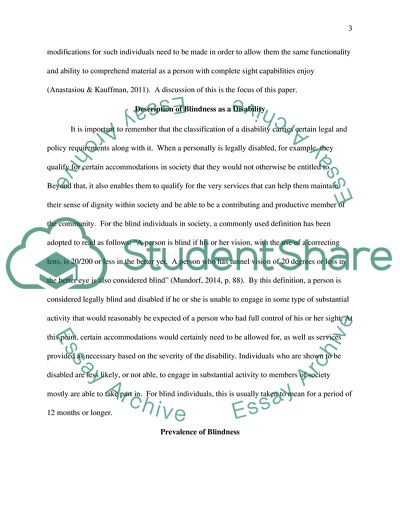Cite this document
(Certain Modifications of Blindness Term Paper Example | Topics and Well Written Essays - 2000 words, n.d.)
Certain Modifications of Blindness Term Paper Example | Topics and Well Written Essays - 2000 words. Retrieved from https://studentshare.org/health-sciences-medicine/1876831-blindness-disability
Certain Modifications of Blindness Term Paper Example | Topics and Well Written Essays - 2000 words. Retrieved from https://studentshare.org/health-sciences-medicine/1876831-blindness-disability
(Certain Modifications of Blindness Term Paper Example | Topics and Well Written Essays - 2000 Words)
Certain Modifications of Blindness Term Paper Example | Topics and Well Written Essays - 2000 Words. https://studentshare.org/health-sciences-medicine/1876831-blindness-disability.
Certain Modifications of Blindness Term Paper Example | Topics and Well Written Essays - 2000 Words. https://studentshare.org/health-sciences-medicine/1876831-blindness-disability.
“Certain Modifications of Blindness Term Paper Example | Topics and Well Written Essays - 2000 Words”. https://studentshare.org/health-sciences-medicine/1876831-blindness-disability.


